ENEPAQ Tiny BMS in moon and asteroid exploration robot
Engineering is all about passion for the unknown, patience and a persistence to dive deeper and turn smart ideas into working prototypes. But the path to success might be bumpy. It is rarely straightforward. ETH Zürich students project – SpaceHopper – is a story with happy ending, but as team member Jorit Geurts laughs, you need to “get your hands dirty”. You need to go through so called “integration hell” to achieve something unforgettable for the rest of your life.
When ENEPAQ received the inquiry for the tiny BMS (Battery Managment System) in this project, we had the feeling that it might be something interesting and unusual. Where it would lead us – nobody knew.
J.Geurts told ETH students’ team story, how everything happened in detail. We talked about what technologies they have used, what challenges faced and how they managed to overcome them. And of course – for the ending – what future their created space robot might expect.
– Let’s start from the beginning. How the project SpaceHopper was born? When and who had this idea to create a robot for moons and asteroids exploration? – ENEPAQ asked J.Geurts.
– SpaceHopper originated as a Focusproject at ETH Zürich back in 2021. A Focusproject is a student led project during which students can chose as part of their bachelor’s degree. During a Focusproject students learn to apply their theoretical knowledge in a practical application/project. The idea for SpaceHopper was born in the Robotics Systems Lab (RSL) at ETH. The goal was set to design a legged robot that could explore celestial bodies such as moons and asteroids.
– Please introduce your team. You are 12 students from ETH Zürich – 11 men and 1 woman. What backgrounds did you come from?
– The current SpaceHopper team consists of ETH 12 students – Fabio, Valerio, Moriz, Jorit, Alex, Max, Jasper, Lukas, Jonas, Andrea, Noah and Lara. Seven of them are from robotics field, three – from mechanical engineering and two – electrical engineering.
Not mentioned on the website (SpaceHopper – Legged Locomotion for low-gravity Environments ETHZ) is Philip Arm. He was our PhD supervisor and helped us in various situations. He was handling all the legal and financial aspects from the ETH side.
The team started off with the core-team (Alex, Fabio, Moriz, Valerio and Me) who were also part of the Focusproject. We recruited the other students during lectures or by directly contacting them. This way we recruited a very talented and motivated team. They were a huge asset in the preparation for the zero-g flight.
I just want to mention that the Team of the Focusproject is mentioned on our Website SpaceHopper – Legged Locomotion for low-gravity Environments ETHZ under the Focusproject tab. They built the first version of the Robot that we modified for the zero-g flight.
Development of the robot took 2,5 years
– The project you and your team are working on is exceptional and worth story telling. How would you describe the focus and value of it?
– The focus of the project is to develop legged robots capable of traversing low gravity environments. While this is itself not a new idea, SpaceHopper’s value is the fact that its legs have 3 degrees of freedom each. The robot is controlled using a neural network trained by reinforcement learning.

Recent studies are also looking into this concept, but the greatest value of our project is the fact that we built a system capable of doing this task and successfully testing in a zero-g environment. This is a huge step towards legged robots in low gravity environments. It allows us to gain valuable insight into the ability of a robot to perform attitude control using its legs.
As a student taking part in the project, it was also a huge learning value for me. One can learn all the theoretical aspects of a field/subject. Implementing the theory on a physical system brings so many challenges and new learnings. They are an invaluable experience to take away from the project.
– Let’s talk more about the key features of SpaceHopper. What is it capable of? How much weights? How high can jump? How much cost to make?
– The body is of triangular shape and has three legs with 3 degrees of freedom each that can be actuated by electrical motors. The body was chosen to be triangular as this is the optimal trade of between complexity and weight (two legs are difficult as standing alone needs an active control system, while four legs have one redundant leg for standing still). The robot gained some weight due to the increase safety mechanism for the zero-g and thus weights around 7 kg (the original robot was 5.2 kg). Depending on the gravity levels the robot can jump various heights. In a simulation we set the gravity levels to the asteroid Ceres, where the gravity is 0.27 m/s^2, and the robot was able to jump to a height of 2.25m and a distance of 6 meters.
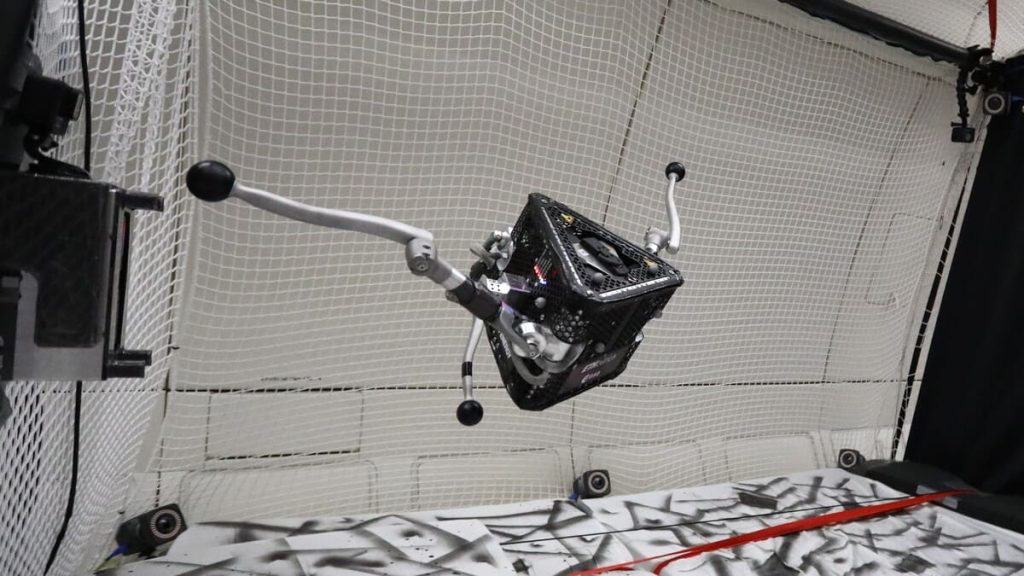
The main reason ETZ team used Tiny BMS in their robot was the compact build size and the current ratings. Nicolas Courtioux foto credit.
Next to the mechanical, the robots have an internal electronics stack. It is comprised of three custom made PCBs and an Nvidia Jetson Nano as our main computing unit. The batteries used for the zero-g campaign were 16 Panasonic NiMH batteries managed by ENEPAQ Tiny BMS. The robot is controlled by a neural network that was trained using deep reinforcement learning. The robot is capable of reorientation to any desired orientation using only its legs. It can jump into a desired direction.
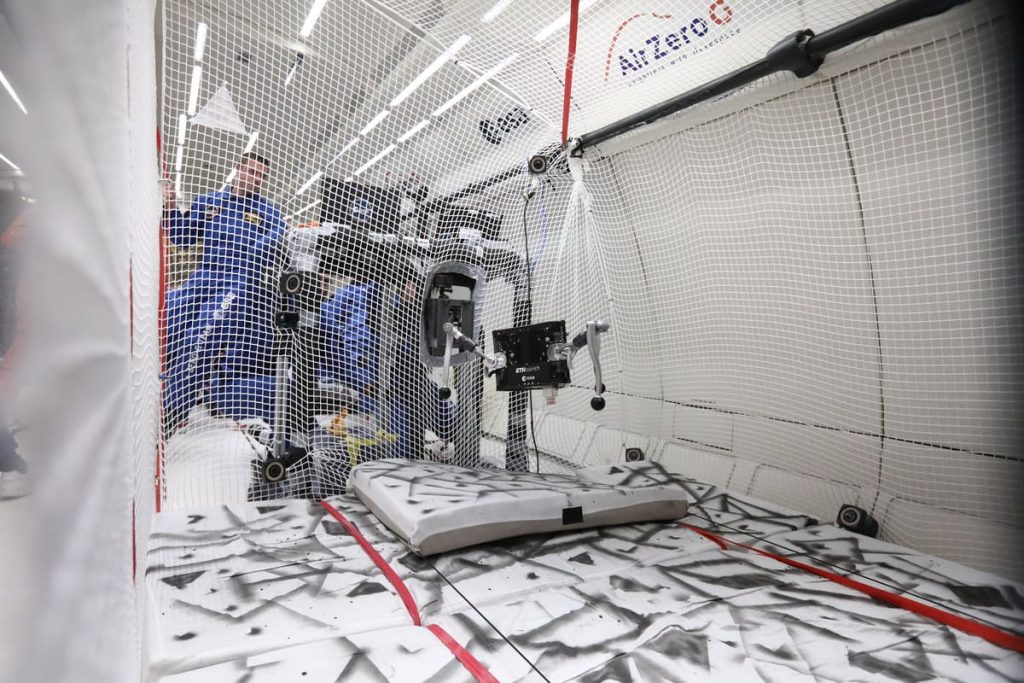
The cost of the robot overall is difficult to estimate. It has been in development for 2.5 years and many things were updated. But since all the parts are custom built the robot is expensive.
Cats behavior became main inspiration for the approach
– The project itself is unique and has high scientific value, but a fun fact was included in the project presentation about the cats, that caught my attention. Could you tell me a bit more about how cats became a sort of inspiration for the project?
– It is quite challenging to reorient a robot in mid-air. The most common approach is using flywheels, but those are heavy and serve no other purpose (and weight is money in space applications). Thus, we tried to use legs to do the same task. This is however quite challenging as in mid-air the robot cannot contact something to push off against to re-orientate. I guess most of us experienced that when jumping into the water flapping our arms does hardly anything in terms of re orientating.
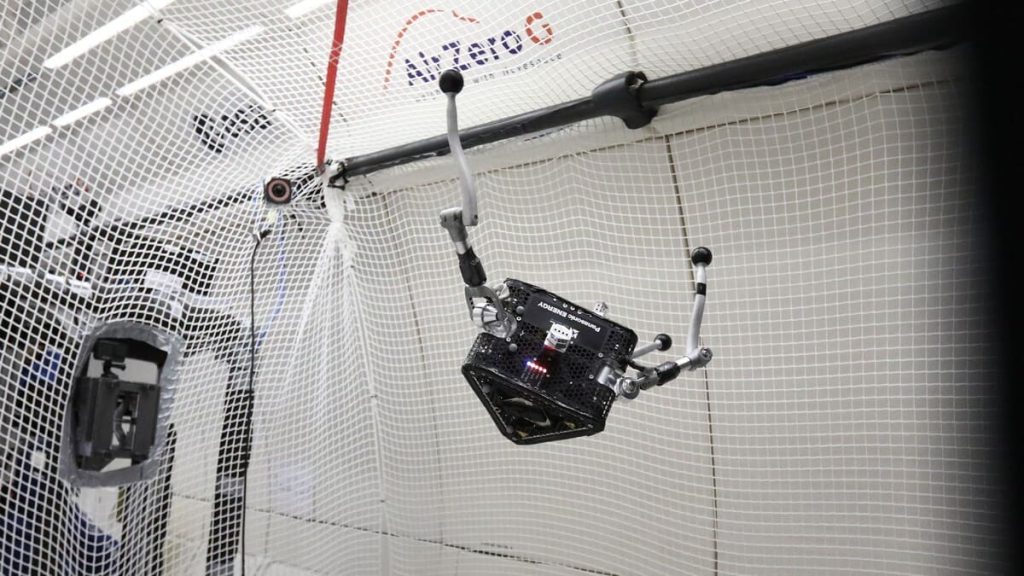
Though one animal is well known to be able to land on its feet no matter the starting position. It is the cat. Thus, the cat figured out a way to re-orientate itself in mid-air just using its legs and body position. This was our main inspiration for the approach. During our studies we learned how the cat can do this. But it is quite difficult to implement as it is an unconventional way of controlling a robot. This is where our neural network came into play as it can learn this behavior like cats have.
– What were the major problems or challenges your team encountered working on this project? How did you manage to overcome them?
– The main problems we encountered were during the so-called integration hell. When building and assembling a system something will go wrong. This is because reality is different from a simulation, parts not properly fitting, electrical signals being corrupted by noise, bugs in our code etc.
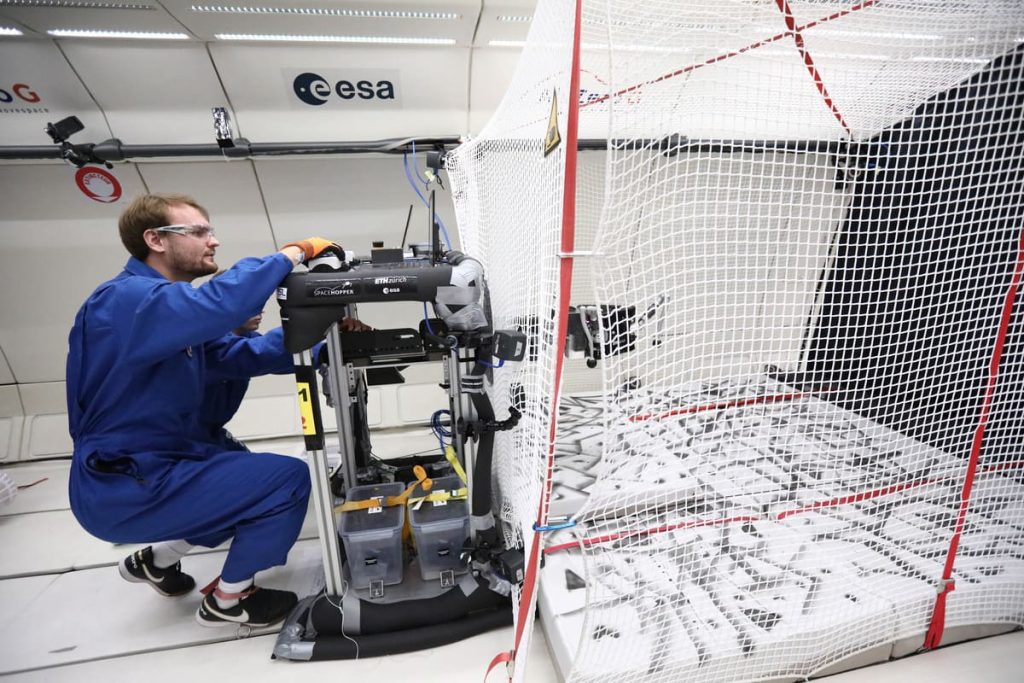
Overcoming these problems is usually quite time-consuming. One needs to find the root first and then fix it. The most important problem we encountered was the fact that the control system that was trained in simulation was not able to transfer well to the real world. This is the so-called sim-to-real transfer. A simulation is always different to the real world. After long days we were finally able to overcome this challenge by “getting our hands dirty”. We were following some classical system modelling techniques that were skipped during the start of the project.
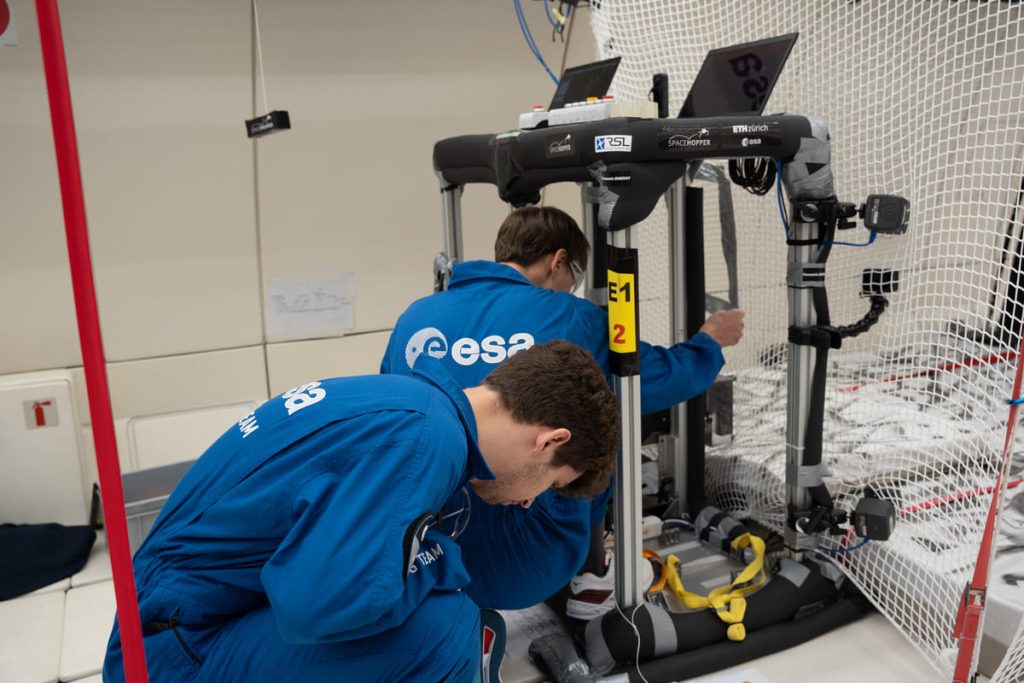
– For the power of the robot you used seven lithium-ion batteries. It is enough for an hour of hopping. What kind of batteries have you chosen and why?
– The original robot used 7 lithium-ion batteries due to their high power to weight ratio. This was shown to be enough for 1-hour constant hopping. For the zero-g flight we needed to change the li-ion cells to NiMH cells due to safety measures imposed by Novespace.
Features of ENEPAQ Tiny BMS: pros and cons
– Your team used ENEPAQ Tiny BMS. How did you find us as a company? Why did you decide to use our BMS in the project?
– Your company was found via the internet and from some other robots at ETH.
The main reason we used Tiny BMS is the compact build size and the current ratings.
Most other BMS have either lower current ratings, are larger in build size or cannot support 16 cells.
– Last year you participated in our company’s survey and named the features you liked about Tiny BMS and disliked. First, you liked the small size and performance of BMS. Second, you named plug and play functionality of the Battery Insider Software as convenient. Third, the Uart connection and documentation was good.
On the opposite side you pointed out some drawbacks. First, the streaming mode lacks documentation. The troubleshooting was a bit tricky for you too. Third, you made some comments on the design, size and soldering on cables. Can you explain it a bit more – what could be improved on our side?
– The streaming mode did not work properly and the switch between streaming mode and reading/writing mode was quite long. Thus fast communication was a bit limited. Additionally, the current reading was not working properly in streaming mode (when connected to battery insider it worked), which was a bit sad as we wanted to record that reading.
Additionally, some documentation on how the streaming mode works was missing. The best solution would be to customize the streaming messages as some of the data was not needed and was still streamed. Then soldering the cables to the BMS was possible, but sometimes a bit tricky as the whole BMS needs to be heated for a successful solder. Though soldering is a space efficient attachment method so it is a bit of a trade-off we could leverage to our advantage in the design.
Then the main improvement, in my mind, is the fact that Battery Insider is only available for Windows. As BMS is used in robotics and automation applications, where Linux or OSX based operating systems are the norm, it would be nice to have a version available for Linux or even MacOS.
Zero-g flight experience
– The other important topic I want to talk is the unique experience of Parabolic Flight. When did it happen? Tell us more.
– The flight campaign took place in Bordeaux France from the 20th of November to the 1st of December 2023. It was hosted by Novespace. We were able to go on the flight as we were part of the ESA Academy Experiments Program. They helped and coached us during the journey to prepare for the flight.
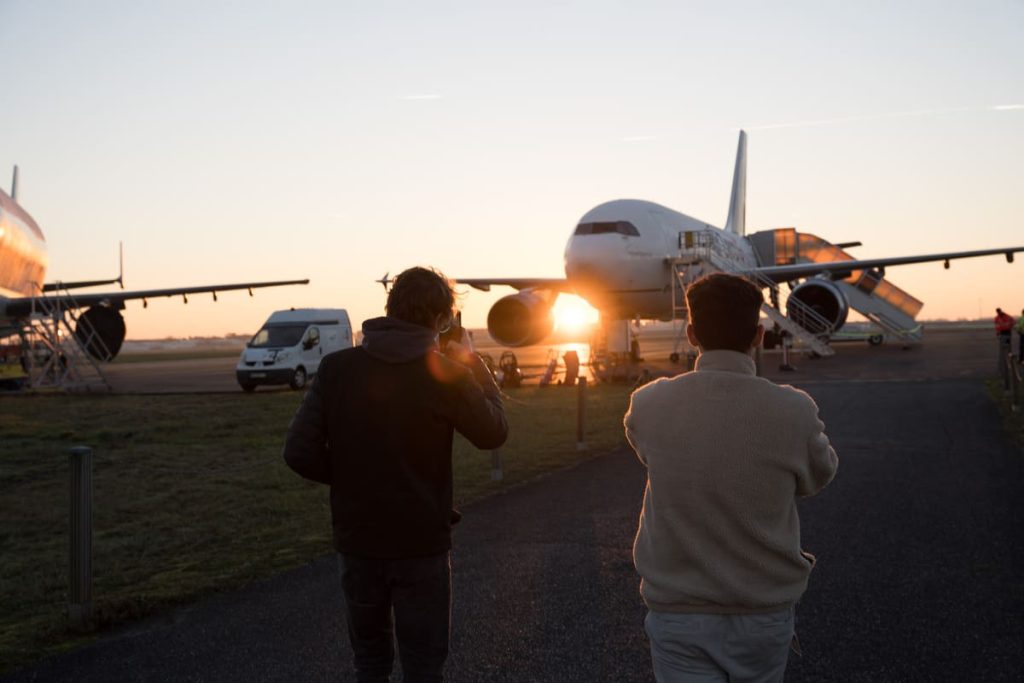
The first week of the campaign we were preparing for the flights by assembling the entire system in the hangar. Then the entire system got tested and we had many security briefings. After a first safety check we could board the plane and assemble the entire system inside the aircraft. This was an interesting experience. We never had such unrestricted access to an airplane. We then again tested and checked the system in the aircraft and were then cleared to fly. After the clearance we trained again for the upcoming flights. During the setup process the engineers and technicians from Novespace were very helpful and were very solution oriented as it was also in their interest that the experiment could fly.
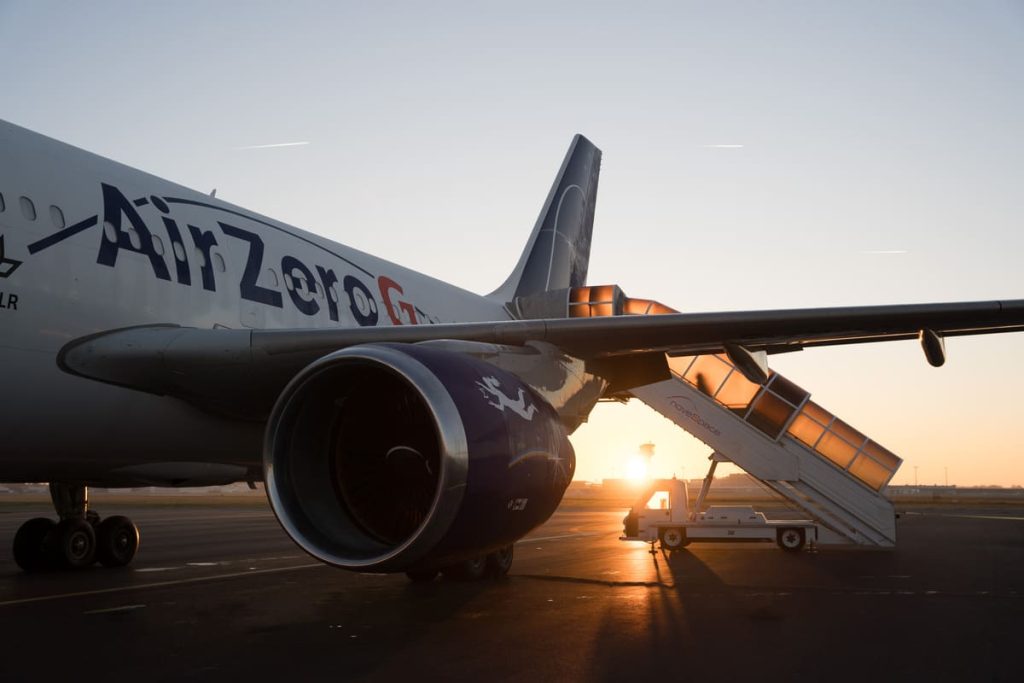
On the Monday of week two we did some more training. We learned about the 10 other experiments onboard the airplane that tested various zero-g phenomena or processes that are different in zero-g compared to 1g on earth.
The three flights were on Tuesday (Valerio and Fabio), Wednesday (Alex and Me) and Thursday (Philip and Moriz) and two people could fly per day. Each flight consisted of 31 parabolas that each last about 1 minute for which we have 20 seconds of 0-g.
Between the parabolas we had about 1 minute 25 second break. The first parabola was the most insane feeling. We will all remember this for the rest of our lives. After the first parabola we started testing the robot. In the first flight we had to configure the setup for the optimal testing conditions and towards the end we already got useful results.
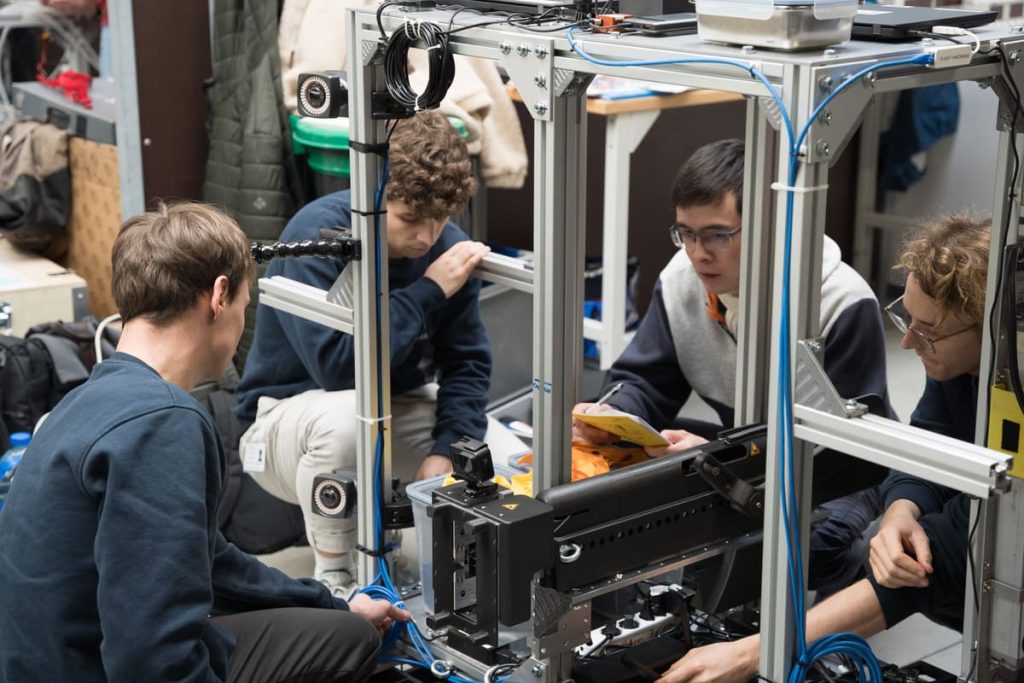
During the second flight we could build upon the knowledge of the first flight. We had a successful test from starting with the first parabola. Then encountered other problems with the motion capture system. During the last flight, all parabolas gave successful results.
During the two weeks we stayed in an Airbnb and we all had a blast during that time. It was challenging work, but we could also explore Bordeaux and had a lot of fun just being together. This was truly an unforgettable experience. We will all remember it forever.
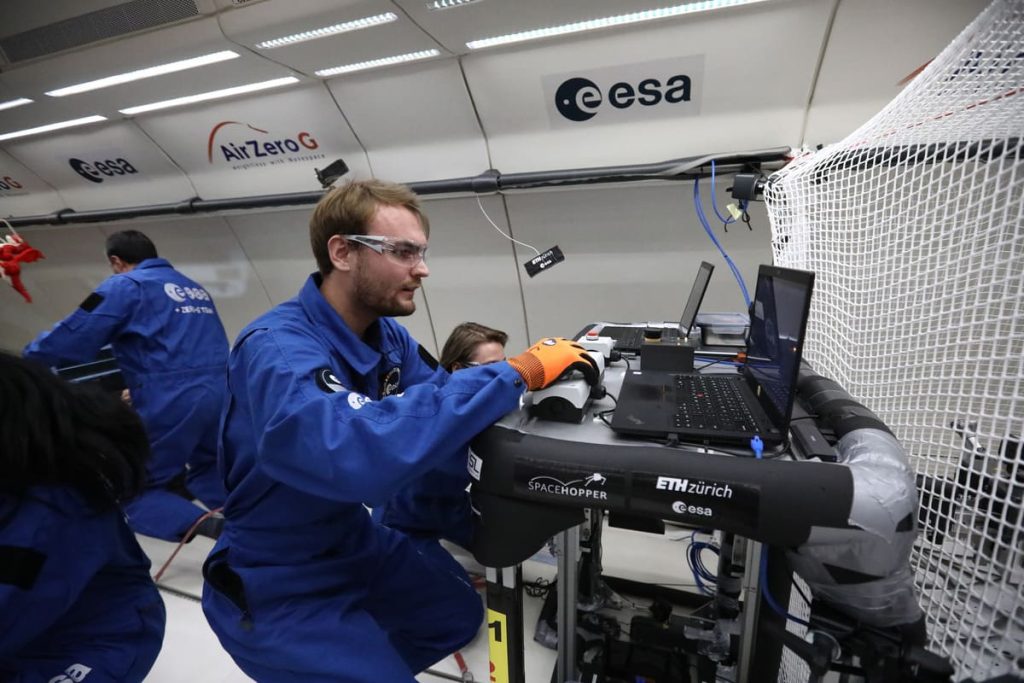
Future vision: problems and opportunities
– What is the vision of the SpaceHopper for the future? Is the project already over? Will it go on with other students’ teams?
– For us, the project will end after we publish our second paper about it. But a few new students are doing some more research on the robot. They are trying to attach a manipulator/arm to the robot that can perform various tasks such as grabbing stuff.
This can potentially be tested in a second parabolic flight in the future.
Additionally, and probably more promising in the sense of actual space exploration soon, is the fact that the concept of SpaceHopper is used to peruse the Lunar Leaper project (https://www.lunarleaper.space/). As I understand it, the project aims to explore caves on the moon to gather data of some kind. SpaceHopper is the inspiration for the application the project handed in at ESA.
– What future you see for the Spacehopper robot itself. How broad could it be used in space robotics and when could it happen?
– I think until SpaceHopper is space grade some time will pass. The biggest problem is the robustness of the controller. Since neural networks have few guarantees on the performance and safety aspect, more research needs to be done to make sure the controller will work as intended. Additionally building a space grade robot will increase the weight which will then also change the dynamics of the robot. This again needs new consideration.
But overall, I see a promising future since the legs can be used for more than just jumping and reorientation. One could attach a gripper to pick stuff up or other sensors. This will decrease the weight of the overall system compared to the currently used systems where most of the components are one purpose only (such as flywheels).
Thank you!For more information about the project, please visit SpaceHopper – Legged Locomotion for low-gravity Environments ETHZ
The author: Rūta Šutėnė
Views: 90
